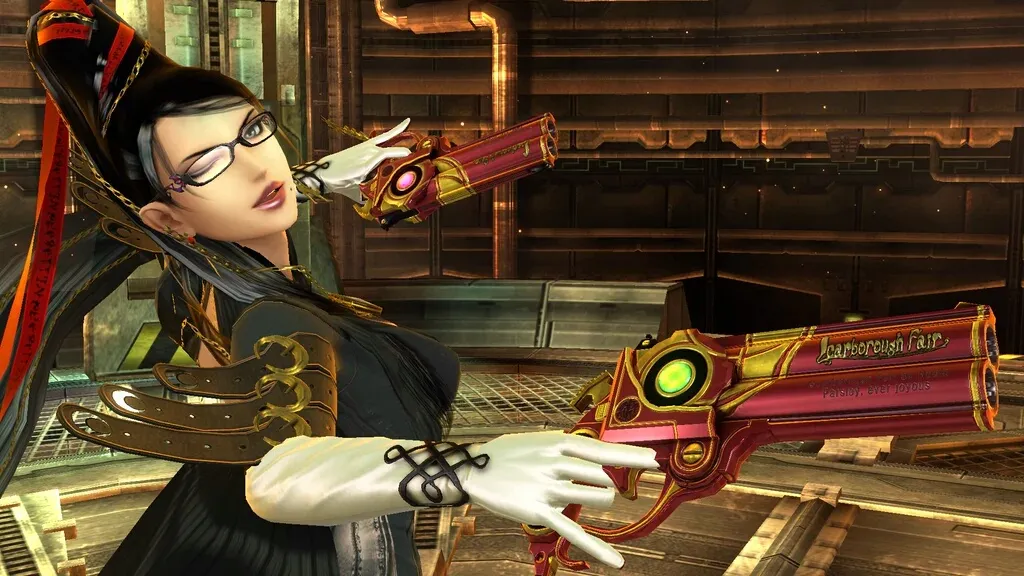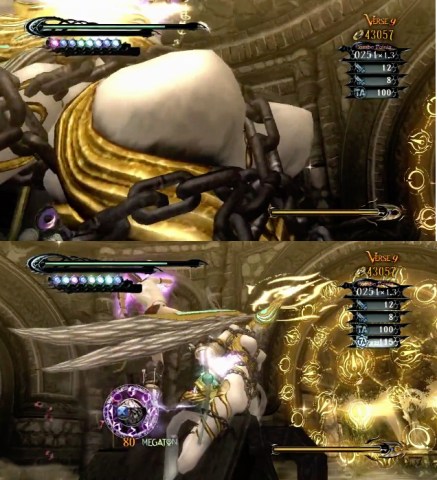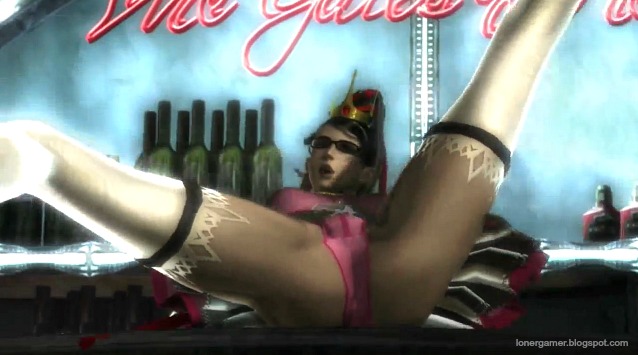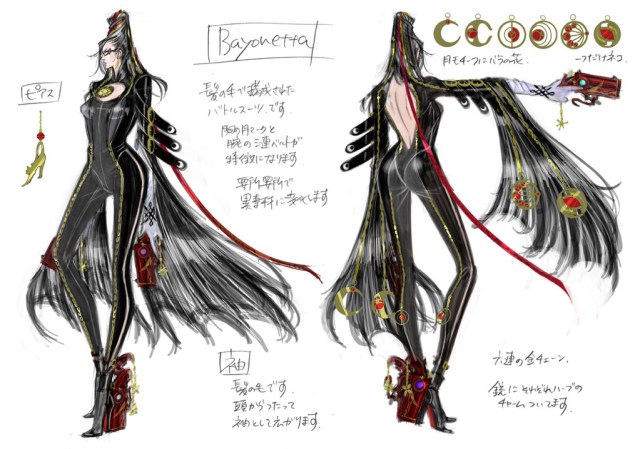Super Smash Bros., Nintendo’s wildly popular fighting franchise, has added its final two DLC characters, Corrin from Fire Emblem and head witch in charge, Bayonetta. Both of their inclusions garnered plenty of celebration, but Bayonetta in particular set the Nintendo corner of the Internet on fire. Many thought that the character’s sexual and violent nature would never translate into a play-style fit for Smash Bros.’ E+ rating.
For many others, she came completely out of left field. While Bayonetta’s two games were moderate successes, she’s far from a veteran in the scene, especially when compared to other DLC characters like Ryu from Street Fighter or Cloud from Final Fantasy VII. To help bridge the knowledge gap for players, Nintendo is promoting her inclusion by discounting her self-titled game for digital purchase to fire up the hype train. Smash has a history of taking B-list Nintendo properties to new heights, e.g. Fire Emblem and Kid Icarus, thus Bayonetta will likely see a huge spike in sales due to her newfound audience. However, with Smash’s fanbase ranging from children and casual gamers to the religiously dedicated, will they accept her with open arms, or has Nintendo perhaps opened a can of worms in the shape of a woman?
As one of the many dedicated Smashers, I knew from the first second of her trailer that I’d have to buy her game. I have, of course, heard of Bayonetta before, but I remember looking at the early advertisements, getting a bad taste in my mouth, and then dismissing any further engagement. Why did I react that way? Well a quick Google search of “Bayonetta,” or god forbid “Bayonetta sexy,” should give you an indication of that first impression: Bayonetta is not a feminist game. Don’t get me wrong; I can enjoy a problematic game, but Bayonetta looked unsalvageable, and as a feminist and gamer, it’s hard not to remember that ol’ Bayo was one of the principle players in the #gamergate fiasco.
In 2010, Feminist Frequency posted a review of Bayonetta to YouTube, in which Anita Sarkeesian criticized a number of aspects of the game. As is the case with every video Sarkeesian posts, it was torn apart by defenders of the title. Feminist Frequency could post a video about how water is wet, and someone would still threaten to kill Sarkeesian. Admittedly, the video was filled with a number of falsities and gave the impression that Sarkeesian’s criticisms came more from observation than actually playing the game. To her credit, however, the video was intended to mostly focus on the game’s tactless advertising campaign. Regardless, the video was later used to discredit Feminist Frequency, “Social Justice Warriors,” and female gamers and characterize them as uniformed and actually against women in games.
Whether everything Sarkeesian said about Bayonetta is true or not, her overall point is still valid; Bayonetta is a franchise that uses sex as a tool to sell, but it was my duty as a gamer and a journalist to do my own research. So, I hunkered down on my couch with a pile of blankets and bulldozed my way through both Bayonetta and Bayonetta 2 over a weekend so I could form my own opinion on the controversial heroine, but after hours of playtime and research, I still don’t know how I feel about her.
Bayonetta is a complicated woman, of that much I’m sure. In short: She’s an amnesia-ridden witch dressed in a suit of hair and armed to the brim with weaponry that she uses to kill angels and fulfill her pact with the demons of Hell that grant her supernatural powers on a mission to reclaim her memories and shoot stuff—and truthfully, that’s not even the half of it. Bayonetta does everything effortlessly. Her powers include but are not limited to: flight, superhuman strength and speed, walking on walls and water, the ability to stop time, manifest weapons from thin air, and use her hair to summon demons of Hell to maim and torture her opponents. Bayonetta is capable of almost anything. In fact, during both games, we almost never see Bayonetta fail, and that’s part of her charm; no challenge scares her. In Bayonetta she actually fights, and kills, God. Needless to say, she isn’t a damsel in distress.
Bayonetta may, in fact, be the most confident and skilled female character I’ve ever encountered. Throughout both games, she fearlessly faces what ever challenge is in front of her, and whenever you think she’s down for the count, she surprises you. And she’s not some cold stone witch, either. Bayonetta is a jokester. Just like the enormous angels she faces in battle, she doesn’t take herself too seriously. With classic lines like, “If you need to learn how to talk to a lady, ask your mum,” and, “I’ll … how do the Americans put it? Oh yes, ‘Bust a cap in yo ass,’” make her hard to not laugh along with and be endeared by. As commenter Pagan Poet remarked on Joe Keiser’s 2014 A.V. Club review, “The game has enough self-awareness, purposeful immaturity, and over-the-topness that it sits firmly in the “camp” camp along with films like Barbarella and Faster, Pussycat! Kill! Kill! Everything about it is so ridiculously in your face that it goes beyond tasteless and back into enjoyable territory.”
When she’s not shooting or joking, she’s helping someone. Both Bayonetta and Bayonetta 2 revolve around powerful feminist concepts: reclaiming one’s identity and moving beyond childhood trauma and helping one’s most precious friend. In both games, Bayonetta time and time again puts herself in the line of fire to protect someone else, and that someone else is often a woman. In fact, she literally goes to Hell and back to protect her best friend, Jeanne. I think one of the most surprising things about playing through Bayonetta is how developed her personality is. She’s funny, caring, and confident, and I believe every action she takes is genuine. Whether she is shooting a loud-mouth angel mid-speech (mansplaining her own backstory to her), being provocative, or protecting a child she just met, her characterization always feels fully fleshed out and believable.
Like the many femme fatales before her (e.g. Catwoman, Black Widow, Lara Croft) Bayonetta doesn’t care much for modesty. Her normal “inactive” costume isn’t all that revealing, but when she activates her wicked weave techniques, things get hairy. Because Bayo’s outfit is actually made of hair, when she uses her hair as a catalyst to summon her demon friends (a strange technique that’s never given explicit explanation), her outfit shrinks away, leaving her naked aside from some strategic strand placements. These moments of nudity are also usually paired with ridiculously sexualizing camera angles that zoom in and around her breasts and crotch. These moments make it very clear that the game anticipates a male viewership as the camera is literally evoking the male gaze.
But as I mentioned earlier, this isn’t your average sexualization, at least in-game, because what separates Bayonetta from Catwoman is that there are almost no men in the game to sexualize her. There’s her friend Rodin (her weapons dealer), Enzo (her troll-like information source), her father, and Luka, the bumbling idiot. While she seems to enjoy teasing Luka and Enzo, it never gets farther than a wink. There’s none of the cliché “I hate men” feminism, either. The men simply play at the sidelines, and the story moves forward. In battle, she’s not using her cleavage as a weapon to distract henchmen making rape threats (looking at you, Arkham City); she’s fighting sexless monsters (totally eliminating the tired trope of ” the woman you just sexualized kicked your ass. How do you feel now?”)
So why does she need to be so naked? Because she’s eccentric. Bayonetta likes being sexy, dangerous, and causing any kind of trouble she can. Unlike other half-naked characters, Bayonetta has the kind of personality and skill set that backs up her wardrobe choice. You believe that this woman would be comfortable, and safe, fighting in heels and mini skirts. As Alicia Andrews says in conversation with other female gamers on Bayonetta, “To me, Bayonetta owns her sexuality. It seems, whether intentionally or unintentionally, that the tight pants, the flirty quips, the languid posing, are all that character’s choice. Bayonetta, the character, enjoys her sexuality. She is choosing to display it in this manner, and is inviting you in on the fun. It’s wonderfully refreshing to have a character that seems in control of her sexy bits. She’s not a inanimate object with breasts heaving in the wind, but a woman flirting. To me, that’s sexy done right.” Of course, however, she’s a fictional character who can’t actually make choices outside of what her designers decide. So even though her characterization aligns with her design, it doesn’t somehow “excuse” the absurdity of her sexualization. So how do we reconcile with that? Well we can look to the creators.
Bayonetta was made from a labor of love by co-creators Hideki Kamiya and Mari Shimazaki. While Kamiya is often credited with the design of Bayo, it was Mari Shimazaki who did the bulk of the actual designing. Shimazaki was tasked to design a modern witch with a penchant for firearms and ran with it. Shimazaki and Kamiya both hold Bayonetta very dear to their hearts, but both with slightly different reasons. Kamiya is quite vocal on his opinions of Bayonetta and women-in-gaming in general on Twitter. He has written several tweets and retweeted plenty of artwork that sexualizes Bayo and refers to her as his “waifu,” or wife. He’s also quick to shut down conversations about women in gaming and has a habit of blocking those who question his ideas. Shimazaki, on the other hand, looks at Bayonetta as a female power fantasy, as does her voice actress, Hellena Taylor, who describes Bayo as, “The women all women would love to be and no woman is.” Yet again, I am at an impasse of contradictions.
So what does this mean for Smash Bros.? Is Bayonetta’s inclusion a feminist victory? If we’re playing the numbers game, then Bayonetta brings the female roster up to 14 characters (without counting pokémon/animals/or miis), which is a whopping 9 more than its predecessor, but it seems paltry to celebrate less than a third of the roster being female. Out of all the female characters, Bayonetta does have the distinction of being one of the few actually starring and playable in their own series. Many of the female characters in Smash are merely on the sidelines of the games they come from. In light of the game’s ESRB E+ rating, Nintendo also toned down Bayo’s provocative attire. Instead of becoming buck-naked during her wicked weave attacks, Bayo simply reveals a little leg, and her poses are more kitsch than raunchy. With Smash’s fixed perspective camera, we’re certainly getting fewer crotch-shots. So, if one’s only interaction with Bayonetta is Smash Bros., I think she’s utterly harmless. Yet, if players find her entertaining enough to purchase her solo game, which many likely will, then they might get a whole lot more than they bargained for.
In my own experience, after all the gameplay and even the research, I have still not decided how to feel about Miss Bayo. She’s a contradictory woman with a contradictory creation and existence. She serves as both a role model and an object of lust. She can save the day, but the viewer might miss it because the camera is too busy observing her jiggle physics. Maybe it’s a case of “love the fandom, hate the fans”? Or it is yet another in a long string of games starring women where we need to “take it for what it is” and hope that one day we get the feminist game we deserve. Either way, I still want her shoes.
(images via Platinum Games, Sega, Nex Entertainment)
Aaron Griffin is a queer Boston poet and reviewer. Aaron’s hobbies including reading comics, watching TV and Movies, and writing about what’s wrong with them. You can check out his poetry in Broken Tooth Press and Voicemail poems and follow him on twitter and tumblr for further rants and raves.
—Please make note of The Mary Sue’s general comment policy.—
Do you follow The Mary Sue on Twitter, Facebook, Tumblr, Pinterest, & Google +?












Published: Feb 23, 2016 12:41 pm